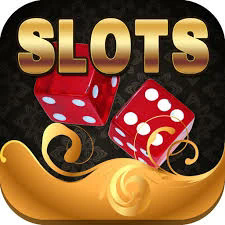# The Birth of Twister: A Game That Changed Fun Forever
Twister is not just a game; it is a cultural phenomenon that has captured the hearts of millions since its inception. With its colorful mat, spinning wheel, and often hilarious entanglements, Twister has become a staple in family game nights, parties, and gatherings. But when did Twister, the game we all know and love, come out? To understand its significance, we must take a closer look at the origins, development, and impact of this iconic game.
## The Origins of Twister
Twister was conceived in 1965 by Charles Foley and Neil Rabens, two inventive minds who were eager to create something that would break the norm in the board game industry. They envisioned a game that would combine physical activity and laughter, challenging players not only mentally but also physically. They pitched the game to several companies before finally landing a deal with Milton Bradley, a key player in the board game market.
Foley and Rabens originally called their game “Untangle,” which reflected the game’s core principle of players curling and twisting their bodies to avoid falling over. The game was simple: players would place their hands and feet on colored circles according to the spin of a wheel, often leading to funny and chaotic positions. Despite the simplicity, the premise ignited a spark of creativity that would soon captivate audiences.
## The Launch of Twister: A Game-Changer
Twister officially hit the shelves in 1966, instantly becoming a sensation. The game’s launch coincided with a burgeoning interest in unconventional forms of entertainment, and Twister quickly garnered public attention. Its unique combination of strategy, balance, and hilarity made it an ideal choice for diverse age groups. Despite initial skepticism, it became an unexpected hit, challenging traditional perceptions of board games.
The initial marketing for Twister focused on its appeal to young adults and college students, who quickly embraced the game as part of their social gatherings. The combination of physical interaction and laughter made it a favorite at parties, and it soon realized its potential as a vehicle for fun.
## The Cultural Impact: Twister’s Rise to Fame
By the late 1960s, Twister had evolved beyond just a game; it became a cultural phenomenon. The game gained notoriety for being playful yet competitive, and its popularity soared. It wasn’t long before Twister made its televised debut, propagating its popularity even further.
The most iconic moment was during the 1966 game show “The Tonight Show Starring Johnny Carson,” where a segment featured the game being played with celebrity guests. This not only skyrocketed Twister’s visibility but also solidified its status as a fun and exciting game for all ages. Viewers were captivated by the absurd positions players found themselves in, which often led to both laughter and camaraderie.
## The 1970s: Twister in the Limelight
The 1970s saw Twister become even more entrenched in popular culture. The game became a staple for college students, often featured in dorm rooms and campus events. Its playful and often absurd nature resonated well with the free-spirited youth of that era. In fact, by the mid-1970s, Twister had sold over three million copies across the United States.
During this time, the game began to transcend its original format. Variations and themed editions emerged, reflecting the growing diversity of board games and the creativity surrounding Twister. Fun additives such as glow-in-the-dark features and themed mats based on popular movies or television shows further cemented the game’s position within the market.
## The Enduring Legacy: Twister Across Generations
Twister has withstood the test of time, and its impact has not waned, even decades after its debut. Generations have played the game, passed it down as part of family traditions, and continued to share in the joy it brings. Twister has become a bridge across ages, making it a perfect choice for family gatherings, parties, and icebreaker activities.
In recent years, Twister has also found new life in the realm of digital gaming, with mobile apps and online versions making it accessible to a new generation. The nostalgic allure combined with modern technology has introduced Twister to a wider audience, ensuring that its legacy continues well into the future.

## The Mechanics: How to Play Twister

Understanding how Twister works is crucial in appreciating its appeal. The game is played on a large plastic mat featuring colored circles—red, yellow, blue, and green. Players spin a wheel that indicates which color and which limb to place on the mat: left foot red or right hand blue. The objective is simple: stay balanced and avoid falling over while following the spinning wheel’s commands.
The physical aspect of Twister makes it a unique experience; players must contort themselves and reach for placements that often put them at a disadvantage. This results in unexpected twists and laughter, as the chaotic positioning among players fosters a lighthearted mood. The game rarely progresses without laughter or friendly banter, making it a perfect icebreaker among friends and family.
## Twister’s Influence on Game Design
Twister’s innovative format changed how people approached board games and player interaction. It paved the way for an entire genre of physical party games that required players to engage in physical movement while having fun. Games like “Musical Chairs,” “Charades,” and more physically demanding games owe some of their popularity to the groundbreaking nature of Twister.
Its advent shifted the games market toward a more interactive approach. The design of Twister inspired future game developers to incorporate physical movement as a central element of gameplay. Other titles followed suit, creating a renaissance of party games that emphasized engagement, humor, and physical challenge.
## The Global Phenomenon: Twister Around the World
Twister’s appeal knows no borders. The game has reached international audiences, with various translations and adaptations available in multiple languages. From family game nights in Japan to vibrant parties in Brazil, Twister resonates universally, constantly evolving to suit different cultures’ tastes.
In various countries, adaptations of Twister have emerged, sometimes incorporating local games or blending them with native elements. This global approach has resulted in a continuum of creativity, showcasing how a simple game can transcend cultural norms while maintaining its essential spirit.
## Conclusion: The Enduring Joy of Twister
More than five decades after its release, Twister continues to be a beloved game, uniting friends and family in laughter and shared experiences. Its rich history reflects the evolution of interactive entertainment and serves as a reminder of the importance of play in our lives. As we look ahead, Twister remains a symbol of creativity, joy, and connection, proving that some games are truly timeless.
The fun of Twister goes beyond turf wars and laughter; it’s a reminder that sometimes, the best moments come when we least expect them. So whether you’re a veteran Twister player or a newcomer, the fun never ends when you step onto that colorful mat. The game invites you to spin, reach, and laugh, creating unforgettable memories that will last a lifetime.
